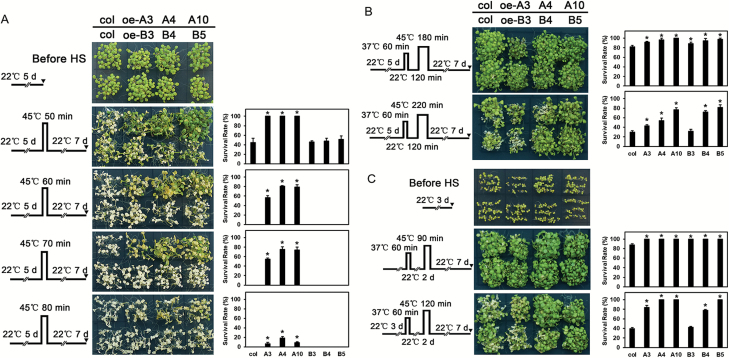Fig. 4.
Thermotolerance analysis of transgenic plants. Three LlHsfA3A overexpression lines (oe-A3, oe-A4, oe-A10) and three LlHsfA3B overexpression lines (oe-B3, oe-B4, oe-B5) were used in this experiment. The phenotypes of the wild-type and transgenic seedlings are shown following their treatment with different heat stress (HS) regimes (A–C), which are indicated to the left of the images. (A) The 5-d-old seedlings were directly exposed to 45 °C to detect basal thermotolerance (BT). (B) The 5-d-old seedlings were first treated with a non-lethal temperature of 37 °C for 60 min, followed by recovery for 2 h at 22 °C, and then subjected to 45 °C to detect acquired thermotolerance after short-time recovery (ATSR). (C) The 3-d-old seedlings were treated with 37 °C for 60 min, then cultured under 22 °C for 2 d, then exposed to 45 °C to detect acquired thermotolerance after long-time recovery (ATLR). The plants in (A–C) were photographed 7 d after the final HS. The survival rate of both the wild-type and transgenic lines was measured at day 7 after the final HS treatment. Data are means (±SD) of three independent experiments. One representative set of plants is shown for each experiment. Each treatment included over 30 seedlings of each line. Significant differences between the wild-type and transgenic plants are indicated (*P<0.05, Student’s t-test).

